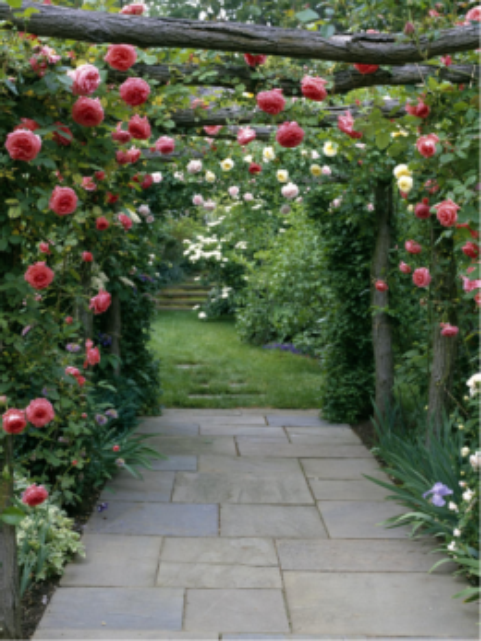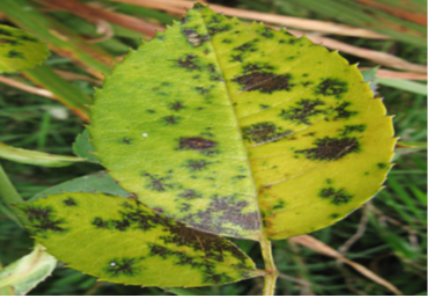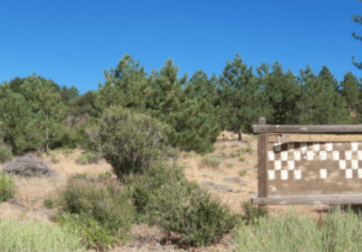Plant Diseases, Prevention and Cures
HOW TO PREVENT AND TREAT BLACKSPOT
- Blackspot is a fungus that affects rose bushes. Black spots appear on leaves which enlarge over time and make the foliage around the spots yellow. The leaves will go from green to yellow and then drop to the ground. If left untreated, it can defoliate the entire plant. The disease spreads by rain or overhead watering and can affect other nearby plants. Heirloom Roses' Head Grower, Don Merrick, provides some tips on how you can prevent and treat Blackspot.
- Plant disease-resistant roses: There are many varieties that have strong resistance to Blackspot and other fungal abnormalities. Some of our favorite varieties that exhibit good to great disease resistance are: ‘Apricot Abundance,’ ‘ Electron, ’ ‘By Appointment,’ ‘Welsh Gold,’ ‘Morning Has Broken,’ ‘Carefree Beauty,’ and ‘Highfield.’

- Find the right spot: Plant roses in an area that gets 6-8 hours of sunlight daily. They also need good air circulation. Space them out to give good air m o v e m e n t and prune out some of the inner branches to allow more air movement into the center of the plant. Also, plant them in a spot that has good drainage. You can also add well composted organic matter into the soil to make the soil friable and well drained. This will also encourage an abundance of beneficial organisms.
- Water correctly: Too much water and water at the wrong time of day will encourage the outbreak of Blackspot. The best rule of thumb is to water when the soil is dry to the touch at about 2-3" below the surface. If it is during the cooler spring months, a deep thorough soaking once a week is sufficient. If it is raining, check the soil to determine if watering is necessary. During the hotter summer months, it will be necessary to water more frequently and deeply. Keep the foliage dry: If using an overhead sprinkler, it is best to water mid to late morning, giving the roses a chance to dry off during the day. The best method to keep foliage dry is to water the soil only. This can be accomplished by using any of the excellent drip systems or soaker hoses on the market. Also, avoid standing water around your roses and keep the area a around your roses debris free. Blackspot spores will fall to the ground and stay in the leaf matter/ mulch at the base of your roses. Avoid splashing water as the spores can reattach to the undersides of the leaves when they are carried by splashes of water.
- Prune properly: Remove any weak or damaged branches to keep your roses happier and healthier. Cleaning up the debris is paramount to keeping Blackspot at bay. All trimmings, debris and dead leaves need to be removed and destroyed immediately.
- Know you enemy: Recognizing the disease quickly allows you to nip it in the bud. Look for circular black spots that are serrated in appearance on the surface of the leaves. Always check the lower leaves, as they will become infected first. Upper leaves will be yellow and fall off easily. Roses with Blackspot start to grow less vigorously and blooming will be reduced or stop all together.


- Treat immediately: If your rose has been affected, remove all infected leaves from the rose and the ground. Do not compost these leaves. Keep the ground surrounding your roses free of leaf debris and weeds. Then, apply the right type of chemical controls at the right frequency and duration during the most critical times.
- Prevent early: An ounce of prevention is worth a pound of cure. If you can get ahead of the game and have your roses sprayed before there is noticeable damage, then your problems will be reduced or possibly eliminated. It is a good idea to spray a fungicide once every 7-14 days during the growing season. There are many different chemicals to use and there are several organic sprays that can be used with fairly good success. It is vitally important to change up the chemistry, or alternate chemicals throughout the growing season to avoid chemical resistance by the fungus.
- Prune in spring: Not all varieties respond the way we want them to with spring pruning. The once-blooming types of roses will need to be pruned hard just after flowering in the spring and summer to encourage flower bud set for the next spring. This is also a good time to clean them up and take out any diseased wood. Make your cuts well below the Blackspot-damaged area of the plant to ensure that you are removing anything that may be on or in the canes. In the spring, be sure to cut back the canes that are infected with Blackspot. It should be fairly easy to see the black spots on the canes and easy to remove them. Again, whenever you are pruning or cleaning up around your rose, it is imperative that you clean your area up completely.
- Clean your pruners: Another good tip is to disinfect your pruning tools with Lysol disinfectant spray every 15-20 minutes. A 10% bleach solution is also a great way to keep the spores at bay.
—Heirloom Roses
Articles and photos reprinted with permission by The National Gardener, Summer 2016.

 Board Member Login
Board Member Login Our Store
Our Store Blog
Blog



